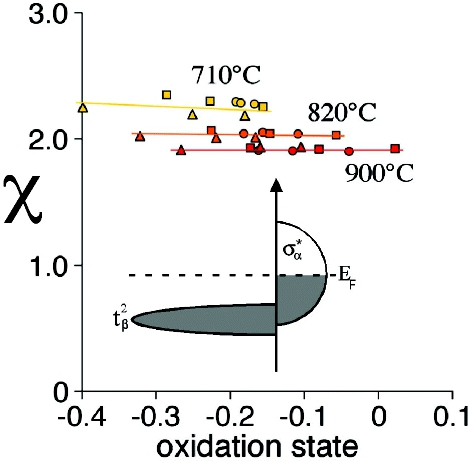Abstract
A high-temperature, controlled atmosphere Faraday magnetometer has been used to measure the magnetic susceptibility of
La1−xSrxCoO3−δ (LSC)
as a function of temperature, Sr content (x), and oxygen nonstoichiometry (δ). Above 800 °C the magnetic susceptibility becomes independent of Co
oxidation state and Sr doping, consistent with metallic valance electrons. Under these conditions, conductivity measurements as a function of x, T,
and δ exhibit classic metallic behavior, with resistivity scaling linearly with temperature and nonlinearly with defect concentration. However, a
large Curie–Weiss susceptibility persists even at high temperatures, suggesting the coexistence of more localized electron configurations. We discuss
this behavior in terms of existing theories of electronic and magnetic structure.
# Graphical Abstract
